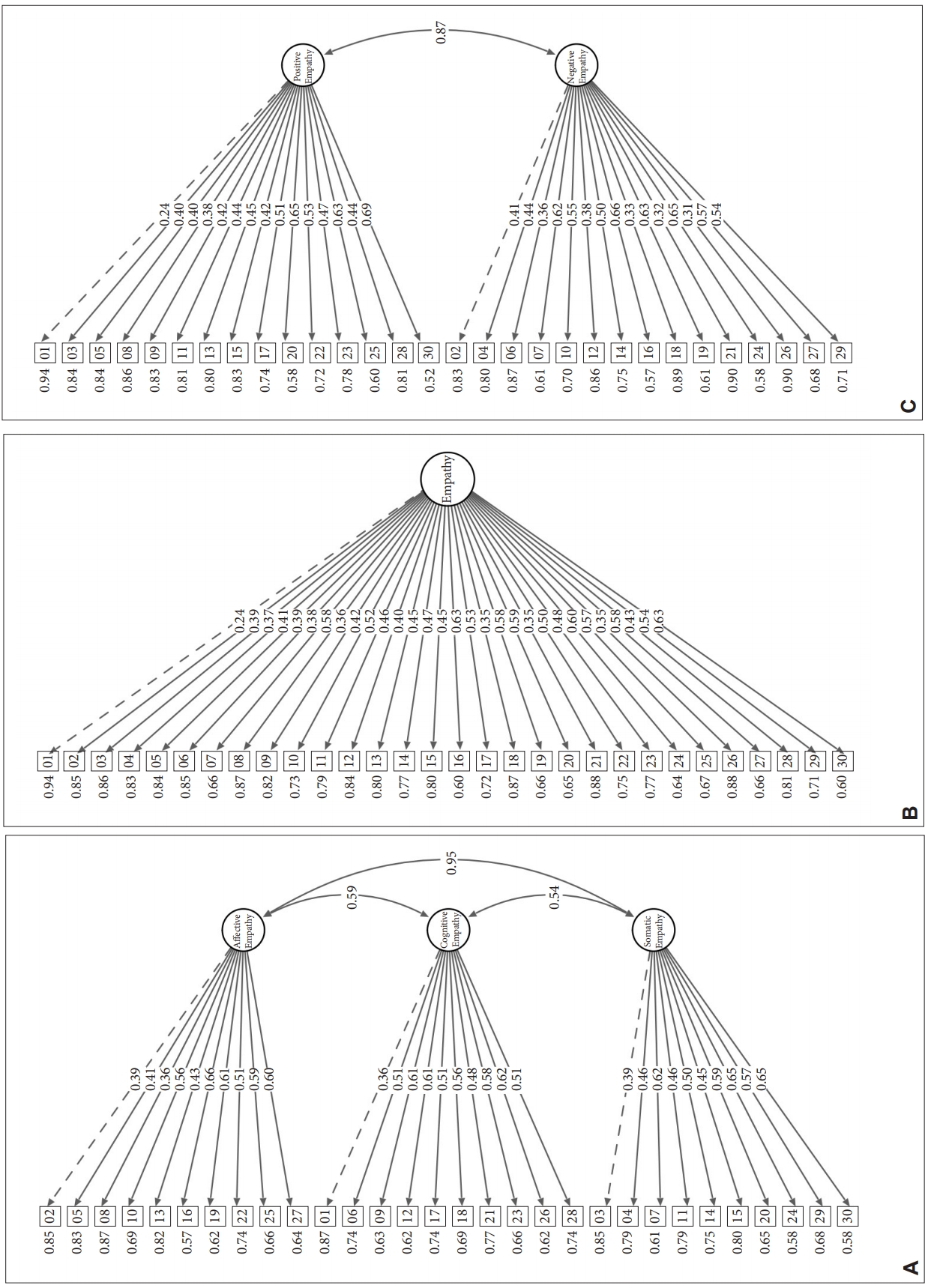 |
 |
- Search
| Psychiatry Investig > Volume 16(9); 2019 > Article |
|
Abstract
Objective
Methods
Results
ACKNOWLEDGEMENTS
The authors have no potential conflicts of interest to disclose.
Author Contributions
Conceptualization: Yeo Eun Park, June Kang. Data curation: Yeo Eun Park, So Young Kim, John Williamson. Formal analysis: Yeo Eun Park, June Kang. Funding acquisition: June Kang. Investigation: Yeo Eun Park. Methodology: June Kang. Project administration: June Kang. Resources: June Kang, So Young Kim. Software: June Kang. Supervision: June Kang. Validation: June Kang, So Young Kim. Visualization: June Kang. Writing—original draft: Yeo Eun Park, June Kang. Writing—review & editing: June Kang, Ho-Kyoung Yoon.
Figure 1.

Table 1.
Table 2.
| CASES-K |
CASES-K |
IRI |
EQ |
ECS |
|||||||||||||||||
|---|---|---|---|---|---|---|---|---|---|---|---|---|---|---|---|---|---|---|---|---|---|
| T | A | C | S | P | N | T | EC | PD | PT | FS | T | C | E | S | T | H | L | F | A | S | |
| Total score | 1 | 0.858** | 0.697** | 0.922** | 0.921** | 0.922** | 0.488** | 0.614** | 0.147 | 0.126 | 0.504** | 0.484** | 0.369* | 0.516** | 0.416** | 0.628** | 0.392** | 0.551** | 0.451** | 0.379* | 0.447** |
| 0.000 | 0.000 | 0.000 | 0.000 | 0.000 | 0.001 | 0.000 | 0.341 | 0.415 | 0.000 | 0.001 | 0.014 | 0.000 | 0.005 | 0.000 | 0.009 | 0.000 | 0.002 | 0.011 | 0.002 | ||
| Affective | 0.858** | 1 | 0.322* | 0.793** | 0.803** | 0.778** | 0.535** | 0.664** | 0.219 | 0.141 | 0.499** | 0.239 | 0.028 | 0.417** | 0.255 | 0.601** | 0.352* | 0.667** | 0.429** | 0.242 | 0.391** |
| 0.000 | 0.033 | 0.000 | 0.000 | 0.000 | 0.000 | 0.000 | 0.153 | 0.361 | 0.001 | 0.118 | 0.859 | 0.005 | 0.094 | 0.000 | 0.019 | 0.000 | 0.004 | 0.114 | 0.009 | ||
| Cognitive | 0.697** | 0.322* | 1 | 0.459** | 0.670** | 0.615** | 0.112 | 0.169 | -0.155 | 0.184 | 0.160 | 0.628** | 0.696** | 0.360* | 0.551** | 0.230 | 0.137 | 0.092 | 0.239 | 0.262 | 0.137 |
| 0.000 | 0.033 | 0.002 | 0.000 | 0.000 | 0.469 | 0.274 | 0.314 | 0.233 | 0.300 | 0.000 | 0.000 | 0.016 | 0.000 | 0.132 | 0.377 | 0.554 | 0.119 | 0.086 | 0.376 | ||
| Somatic | 0.922** | 0.793** | 0.459** | 1 | 0.816** | 0.884** | 0.538** | 0.662** | 0.266 | 0.010 | 0.566** | 0.360* | 0.229 | 0.498** | 0.257 | 0.696** | 0.460** | 0.583** | 0.442** | 0.423** | 0.549** |
| 0.000 | 0.000 | 0.002 | 0.000 | 0.000 | 0.000 | 0.000 | 0.080 | 0.948 | 0.000 | 0.016 | 0.135 | 0.001 | 0.092 | 0.000 | 0.002 | 0.000 | 0.003 | 0.004 | 0.000 | ||
| Positive | 0.921** | 0.803** | 0.670** | 0.816** | 1 | 0.698** | 0.492** | 0.621** | 0.030 | 0.228 | 0.543** | 0.493** | 0.343* | 0.514** | 0.455** | 0.555** | 0.393** | 0.491** | 0.441** | 0.374* | 0.293 |
| 0.000 | 0.000 | 0.000 | 0.000 | 0.000 | 0.001 | 0.000 | 0.844 | 0.137 | 0.000 | 0.001 | 0.023 | 0.000 | 0.002 | 0.000 | 0.008 | 0.001 | 0.003 | 0.012 | 0.053 | ||
| Negative | 0.922** | 0.778** | 0.615** | 0.884** | 0.698** | 1 | 0.408** | 0.511** | 0.240 | 0.005 | 0.387** | 0.400** | 0.338* | 0.437** | 0.312* | 0.602** | 0.329* | 0.525** | 0.390** | 0.325* | 0.530** |
| 0.000 | 0.000 | 0.000 | 0.000 | 0.000 | 0.006 | 0.000 | 0.117 | 0.974 | 0.009 | 0.007 | 0.025 | 0.003 | 0.039 | 0.000 | 0.029 | 0.000 | 0.009 | 0.031 | 0.000 | ||
CASES-K: Korean version of The Cognitive, Affective, and Somatic Empathy Scale, IRI: Interpersonal Reactivity Index, EQ: Empathy Quotient, ECS: Emotion Contagion Scale, T: Total Score, EC: Empathic Concern, PD: Personal Distress, PT: Perspective Taking, FS: Fantasy, C: Cognitive Empathy, E: Emotional Empahy, S: Social Skill, H: Happiness, L: Love, F: Fear, A: Angry, S: Sad
Table 3.
REFERENCES







